Abstract
The MUST package is a phylogenetically oriented set of programs for data management and display, allowing one to handle both raw data (sequences) and results (trees, number of steps, bootstrap proportions). It is complementary to the main available software for phylogenetic analysis (PHYLIP, PAUP, HENNING86, CLUSTAL) with which it is fully compatible. The first part of MUST consists of the acquisition of new sequences, their storage, modification, and checking of sequence integrity in files of aligned sequences. In order to improve alignment, an editor function for aligned sequences offers numerous options, such as selection of subsets of sequences, display of consensus sequences, and search for similarities over small sequence fragments. For phylogenetic reconstruction, the choice of species and portions of sequences to be analyzed is easy and very rapid, permitting fast testing of numerous combinations of sequences and taxa. The resulting files can be formatted for most programs of tree construction. An interactive tree-display program recovers the output of all these programs. Finally, various modules allow an in-depth analysis of results, such as comparison of distance matrices, variation of bootstrap proportions with respect to various parameters or comparison of the number of steps per position. All presently available complete sequences of 28S rRNA are furnished aligned in the package. MUST therefore allows the management of all the operations required for phylogenetic reconstructions.
Full text
PDF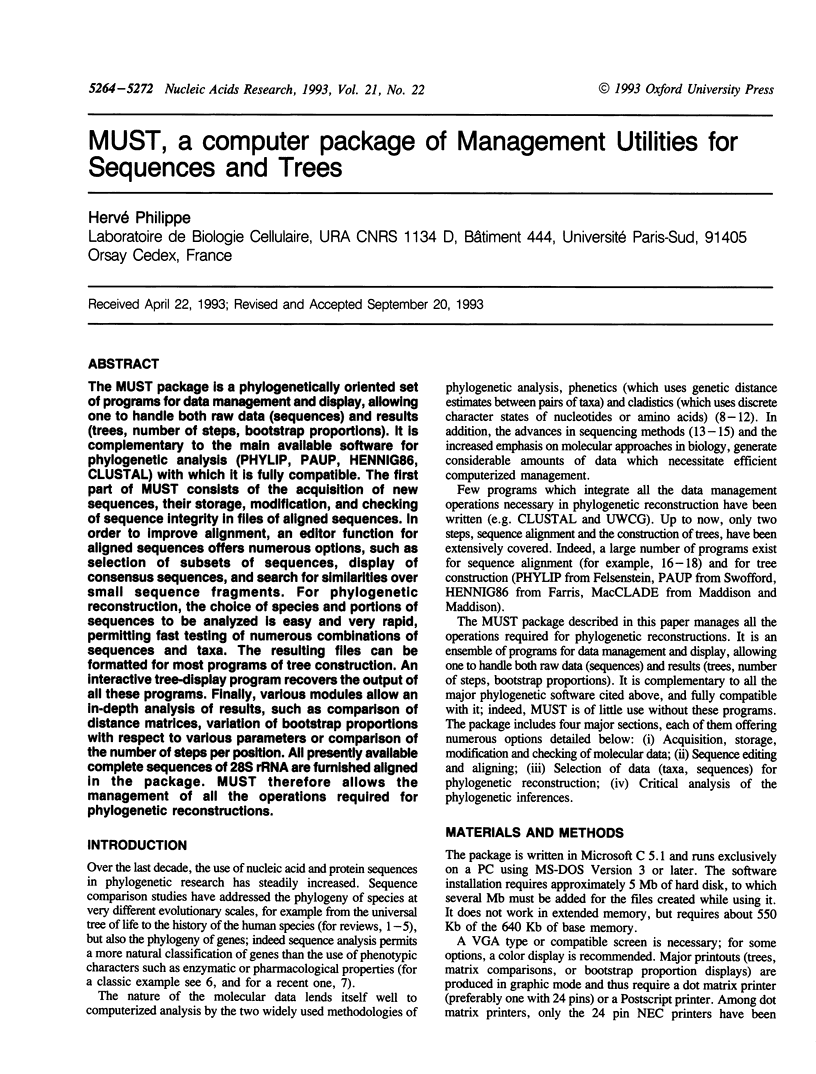
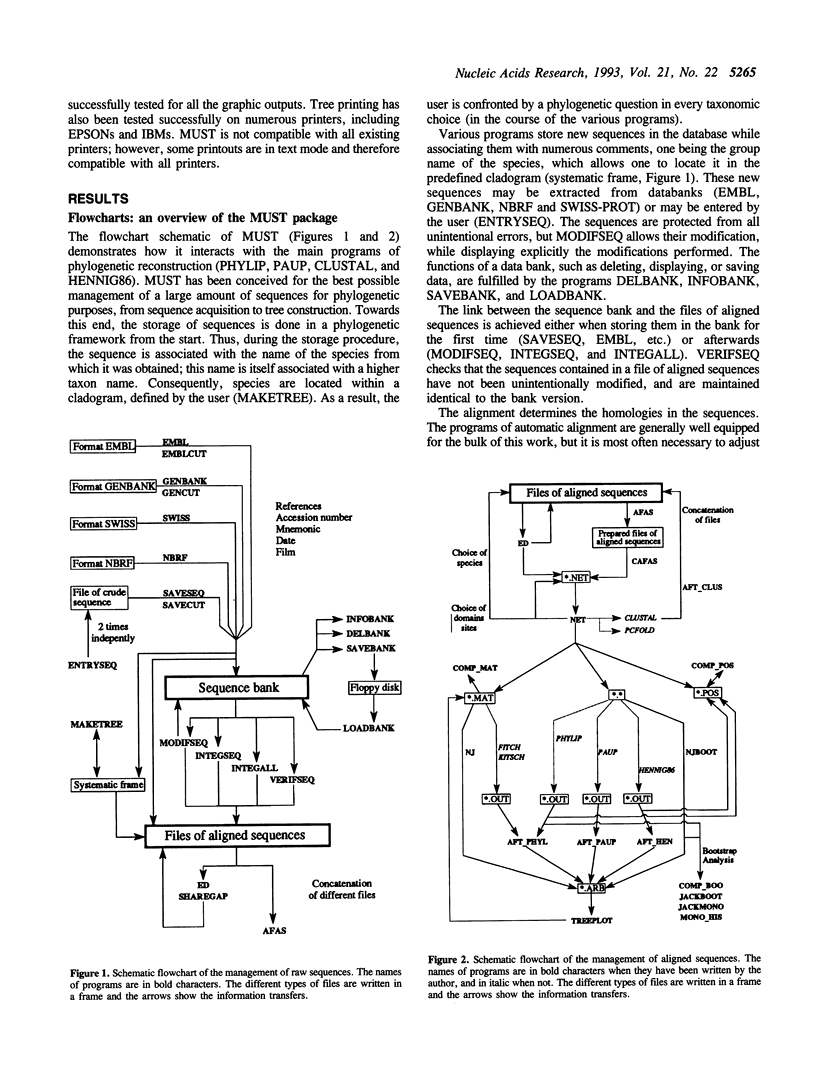
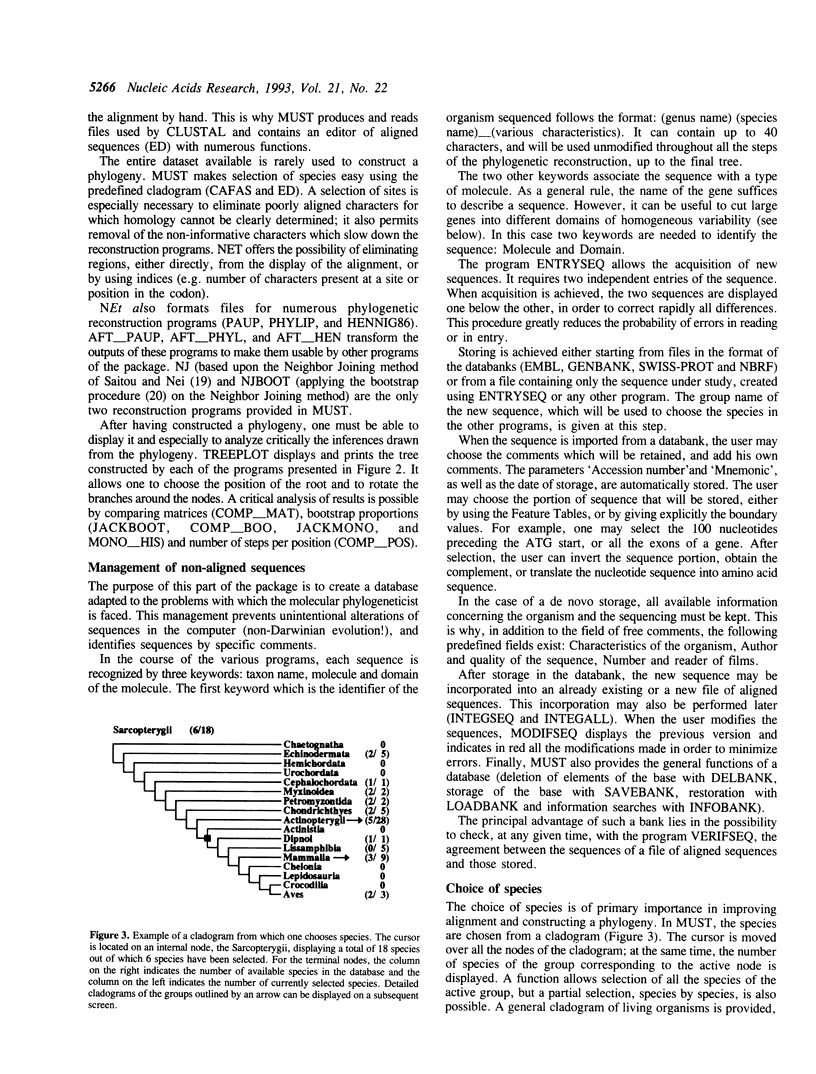
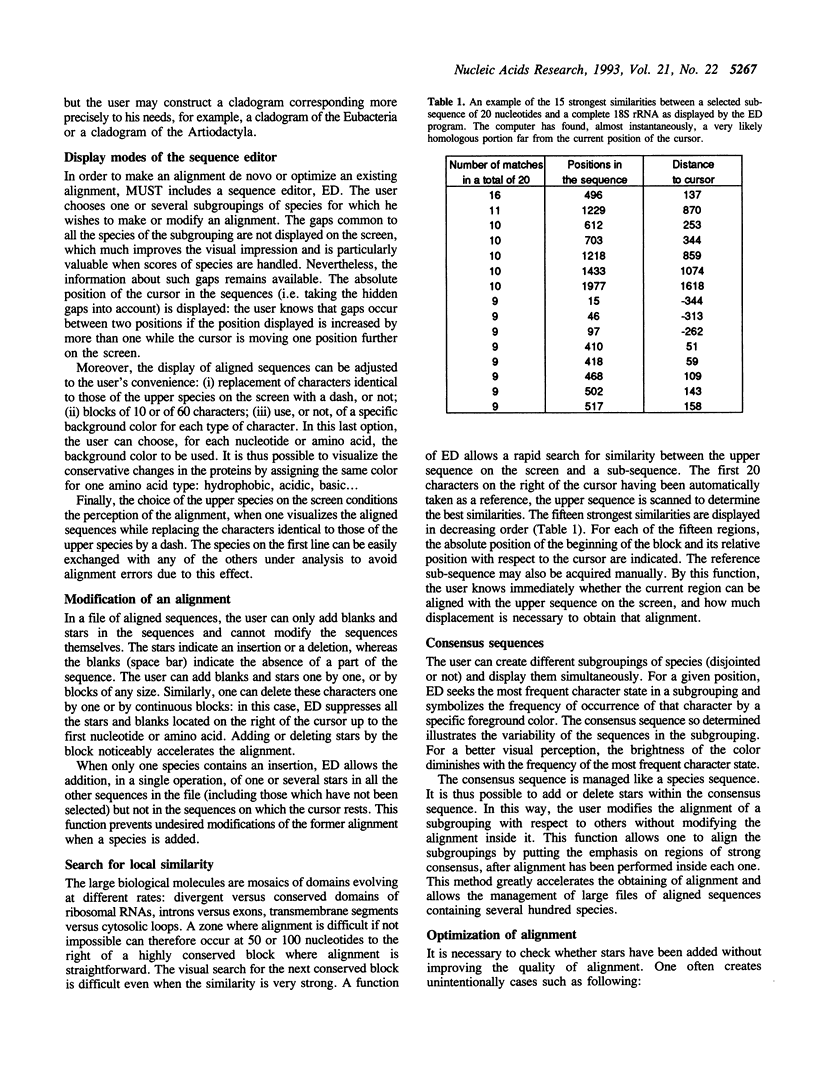
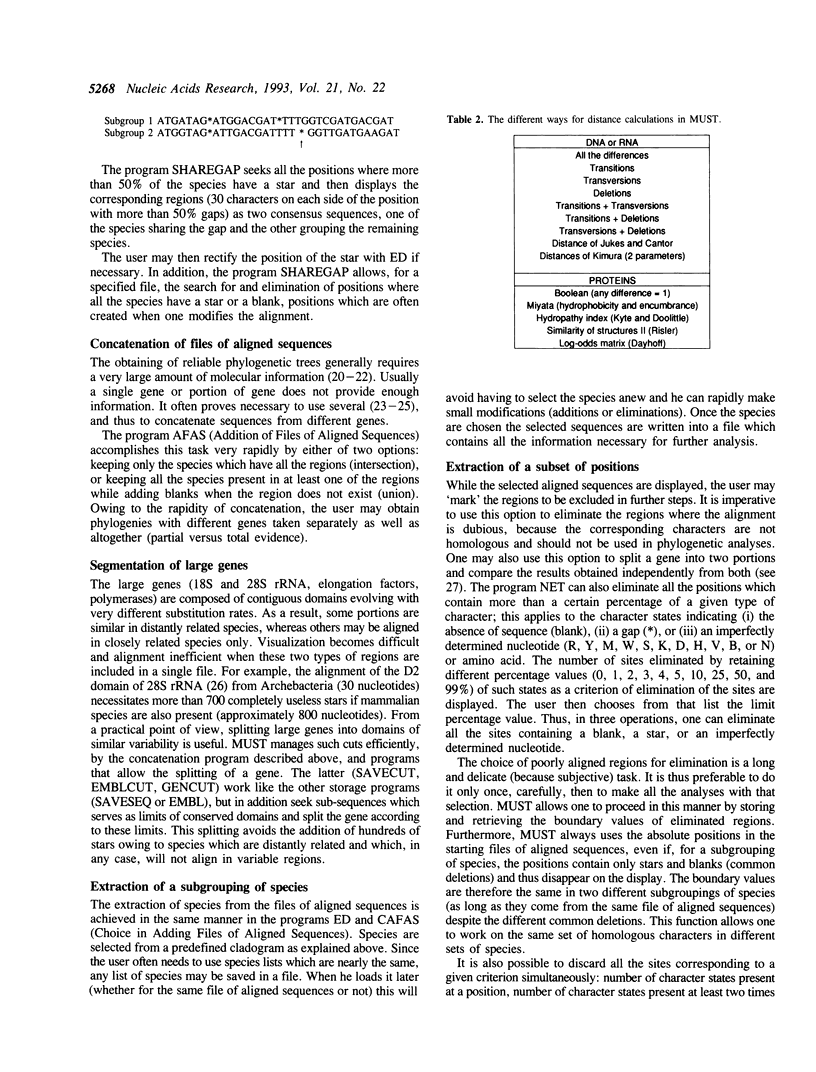
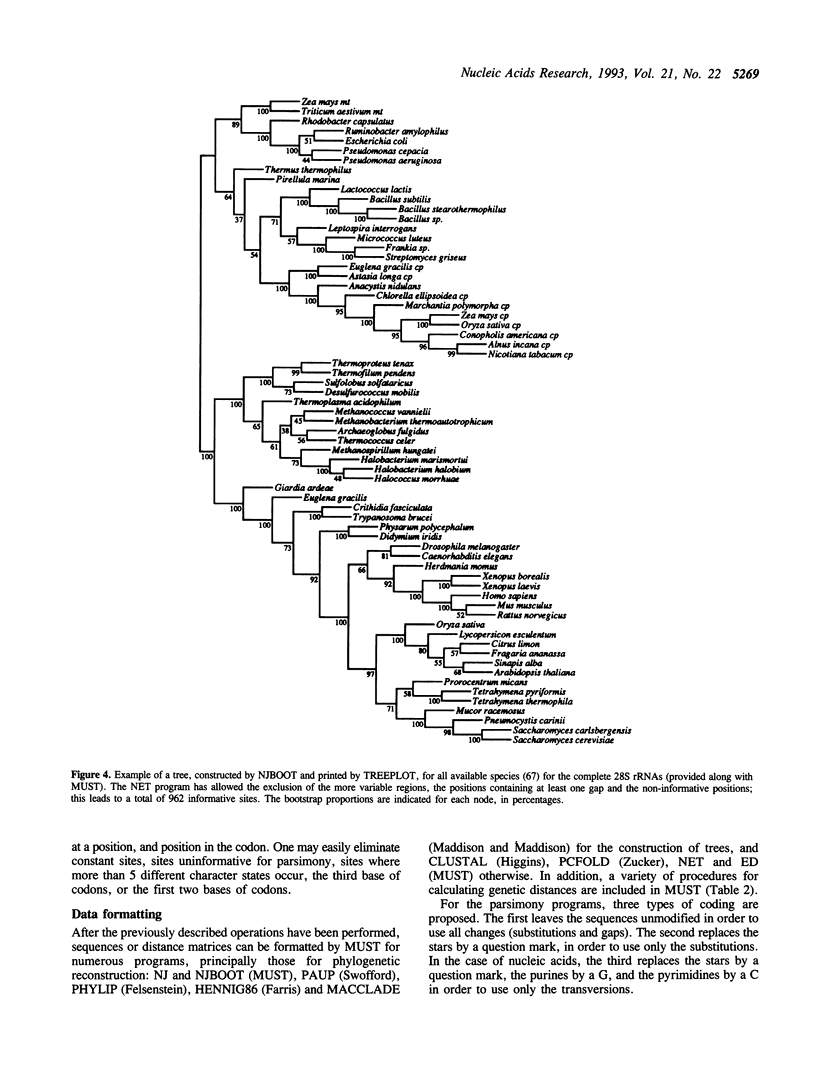
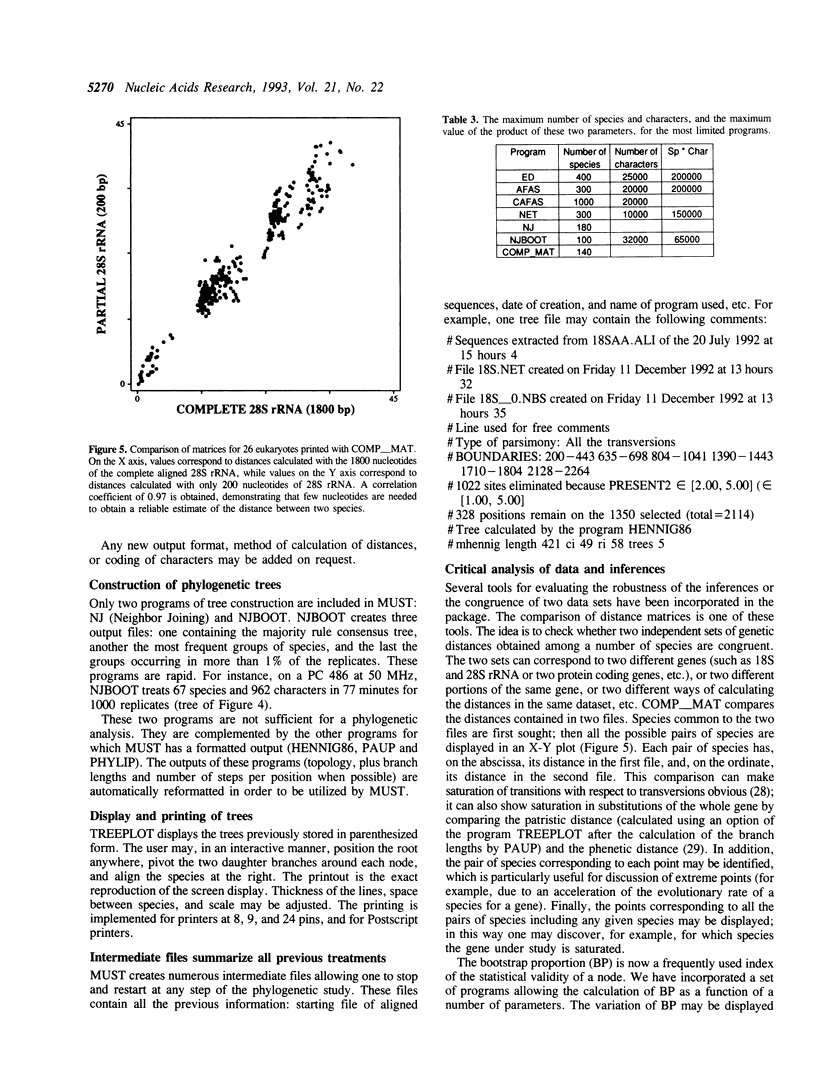
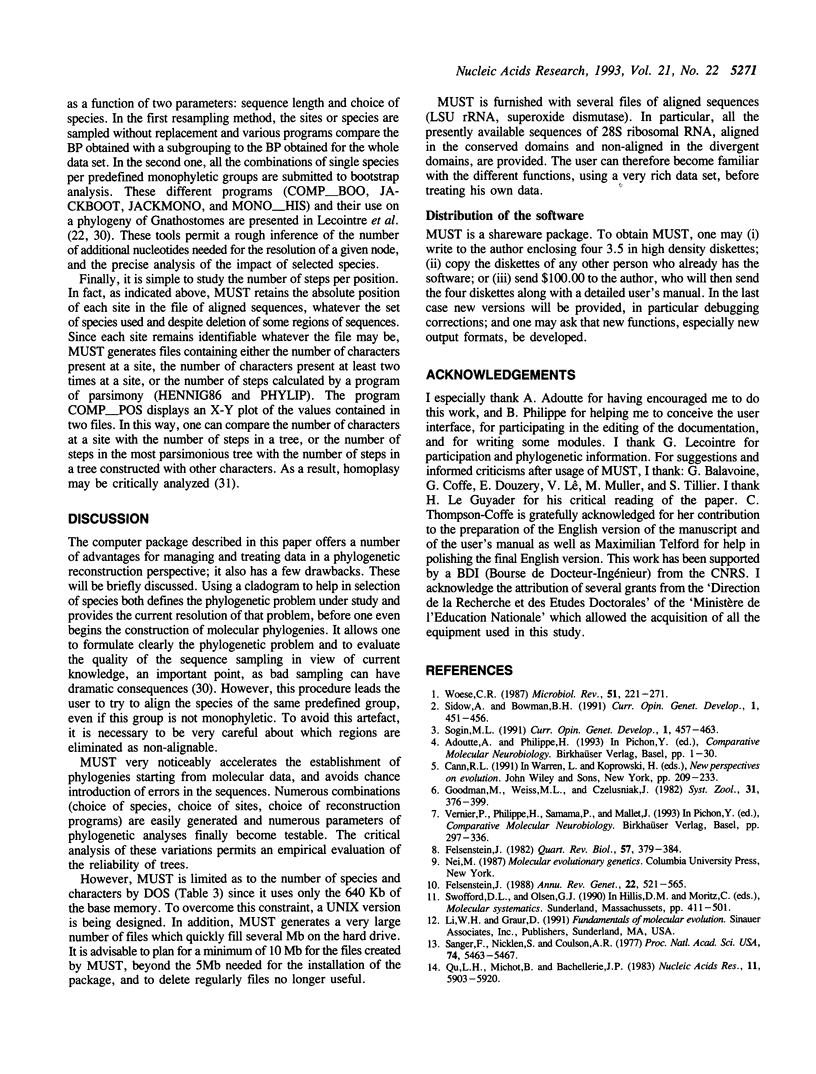
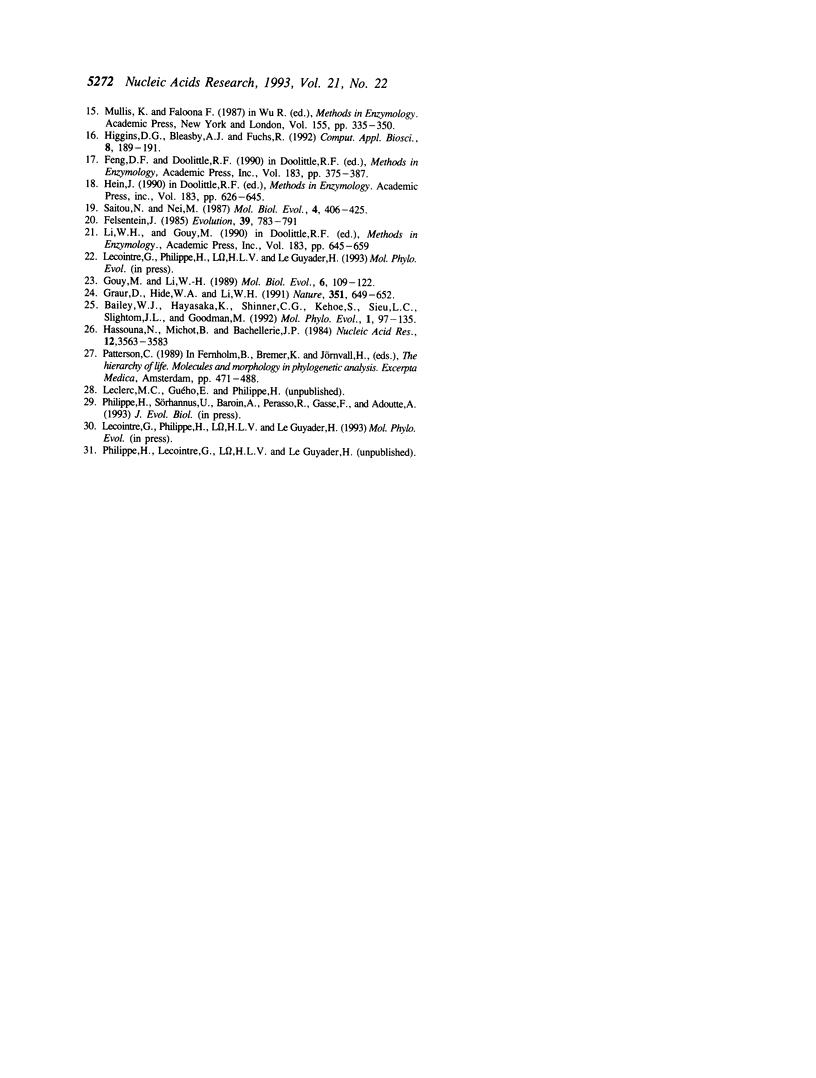
Selected References
These references are in PubMed. This may not be the complete list of references from this article.
- Adoutte A., Philippe H. The major lines of metazoan evolution: summary of traditional evidence and lessons from ribosomal RNA sequence analysis. EXS. 1993;63:1–30. doi: 10.1007/978-3-0348-7265-2_1. [DOI] [PubMed] [Google Scholar]
- Bailey W. J., Hayasaka K., Skinner C. G., Kehoe S., Sieu L. C., Slightom J. L., Goodman M. Reexamination of the African hominoid trichotomy with additional sequences from the primate beta-globin gene cluster. Mol Phylogenet Evol. 1992 Jun;1(2):97–135. doi: 10.1016/1055-7903(92)90024-b. [DOI] [PubMed] [Google Scholar]
- Felsenstein J. Phylogenies from molecular sequences: inference and reliability. Annu Rev Genet. 1988;22:521–565. doi: 10.1146/annurev.ge.22.120188.002513. [DOI] [PubMed] [Google Scholar]
- Feng D. F., Doolittle R. F. Progressive alignment and phylogenetic tree construction of protein sequences. Methods Enzymol. 1990;183:375–387. doi: 10.1016/0076-6879(90)83025-5. [DOI] [PubMed] [Google Scholar]
- Gouy M., Li W. H. Molecular phylogeny of the kingdoms Animalia, Plantae, and Fungi. Mol Biol Evol. 1989 Mar;6(2):109–122. doi: 10.1093/oxfordjournals.molbev.a040536. [DOI] [PubMed] [Google Scholar]
- Graur D., Hide W. A., Li W. H. Is the guinea-pig a rodent? Nature. 1991 Jun 20;351(6328):649–652. doi: 10.1038/351649a0. [DOI] [PubMed] [Google Scholar]
- Hassouna N., Michot B., Bachellerie J. P. The complete nucleotide sequence of mouse 28S rRNA gene. Implications for the process of size increase of the large subunit rRNA in higher eukaryotes. Nucleic Acids Res. 1984 Apr 25;12(8):3563–3583. doi: 10.1093/nar/12.8.3563. [DOI] [PMC free article] [PubMed] [Google Scholar]
- Hein J. Unified approach to alignment and phylogenies. Methods Enzymol. 1990;183:626–645. doi: 10.1016/0076-6879(90)83041-7. [DOI] [PubMed] [Google Scholar]
- Higgins D. G., Bleasby A. J., Fuchs R. CLUSTAL V: improved software for multiple sequence alignment. Comput Appl Biosci. 1992 Apr;8(2):189–191. doi: 10.1093/bioinformatics/8.2.189. [DOI] [PubMed] [Google Scholar]
- Li W. H., Gouy M. Statistical tests of molecular phylogenies. Methods Enzymol. 1990;183:645–659. doi: 10.1016/0076-6879(90)83042-8. [DOI] [PubMed] [Google Scholar]
- Mullis K. B., Faloona F. A. Specific synthesis of DNA in vitro via a polymerase-catalyzed chain reaction. Methods Enzymol. 1987;155:335–350. doi: 10.1016/0076-6879(87)55023-6. [DOI] [PubMed] [Google Scholar]
- Qu H. L., Michot B., Bachellerie J. P. Improved methods for structure probing in large RNAs: a rapid 'heterologous' sequencing approach is coupled to the direct mapping of nuclease accessible sites. Application to the 5' terminal domain of eukaryotic 28S rRNA. Nucleic Acids Res. 1983 Sep 10;11(17):5903–5920. doi: 10.1093/nar/11.17.5903. [DOI] [PMC free article] [PubMed] [Google Scholar]
- Saitou N., Nei M. The neighbor-joining method: a new method for reconstructing phylogenetic trees. Mol Biol Evol. 1987 Jul;4(4):406–425. doi: 10.1093/oxfordjournals.molbev.a040454. [DOI] [PubMed] [Google Scholar]
- Sanger F., Nicklen S., Coulson A. R. DNA sequencing with chain-terminating inhibitors. Proc Natl Acad Sci U S A. 1977 Dec;74(12):5463–5467. doi: 10.1073/pnas.74.12.5463. [DOI] [PMC free article] [PubMed] [Google Scholar]
- Sidow A., Bowman B. H. Molecular phylogeny. Curr Opin Genet Dev. 1991 Dec;1(4):451–456. doi: 10.1016/s0959-437x(05)80191-1. [DOI] [PubMed] [Google Scholar]
- Sogin M. L. Early evolution and the origin of eukaryotes. Curr Opin Genet Dev. 1991 Dec;1(4):457–463. doi: 10.1016/s0959-437x(05)80192-3. [DOI] [PubMed] [Google Scholar]
- Woese C. R. Bacterial evolution. Microbiol Rev. 1987 Jun;51(2):221–271. doi: 10.1128/mr.51.2.221-271.1987. [DOI] [PMC free article] [PubMed] [Google Scholar]


